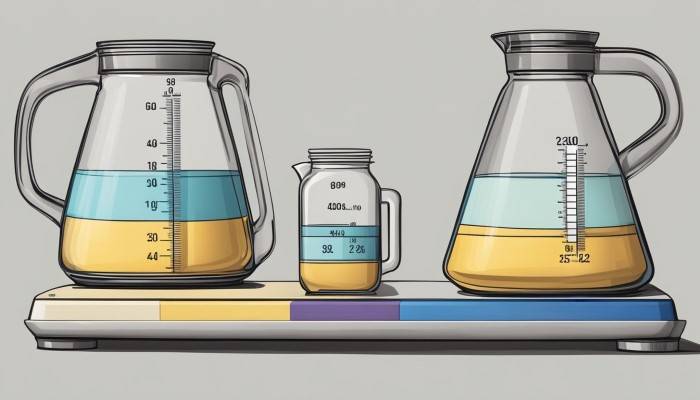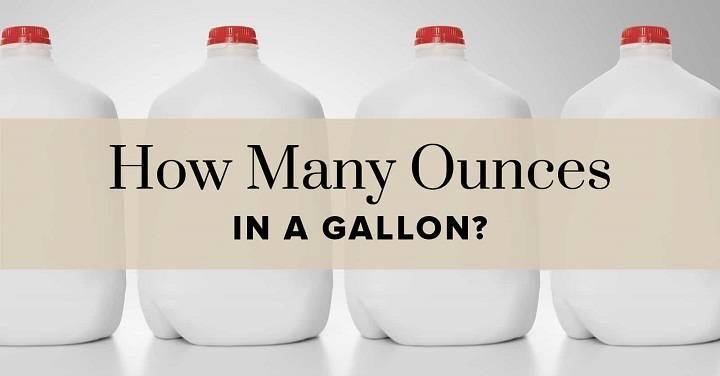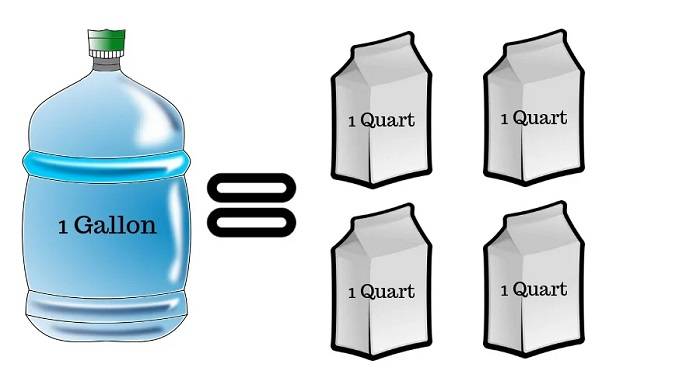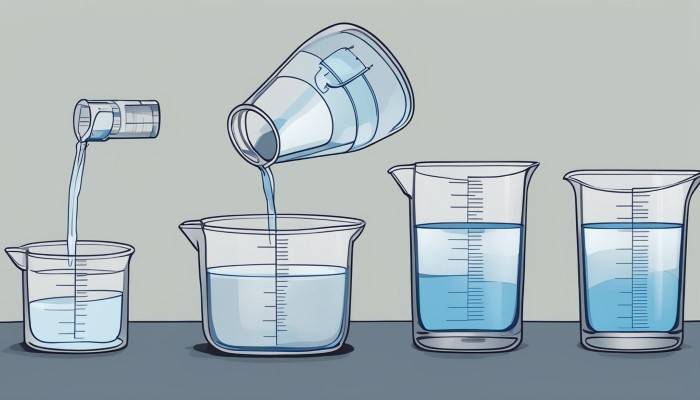Understanding liquid measurements is essential for cooking, baking, brewing, and even scientific experiments. One of the most common questions in the realm of liquid measurements is: “How many ounces are in a gallon?” This comprehensive blog post will delve into the details of liquid measurements, focusing on ounces and gallons, and explore the various contexts in which these measurements are used.
The Basics of Liquid Measurements

Definition of Ounces
An ounce is a unit of weight used in the United States customary and British imperial systems. However, when discussing liquid measurements, we refer to the fluid ounce. A fluid ounce is a unit of volume (not weight) commonly used in the United States to measure liquids.
Definition of Gallons
A gallon is a larger unit of volume used primarily in the United States for measuring liquid substances. There are two types of gallons in use: the US gallon and the UK (imperial) gallon.
Types of Ounces
There are two primary types of fluid ounces:
- US Fluid Ounce: Commonly used in the United States, equal to approximately 29.5735 milliliters.
- UK (Imperial) Fluid Ounce: Used in the United Kingdom, equal to approximately 28.4131 milliliters.
Conversion Between Ounces and Gallons
US Gallon
In the United States, the gallon is divided into smaller units called fluid ounces. One US gallon is equal to 128 US fluid ounces. This is a standard measure used in recipes, fuel economy ratings, and various other contexts.
UK (Imperial) Gallon
In the UK, the imperial gallon is used, and it is equal to 160 UK fluid ounces. The imperial gallon is larger than the US gallon, and thus, there are more fluid ounces in an imperial gallon.
Conversion Chart
Here’s a simple conversion chart to help understand the relationship between ounces and gallons in both the US and UK systems:
| Measurement | US Fluid Ounces | UK Fluid Ounces |
| 1 Gallon (US) | 128 | – |
| 1 Gallon (UK) | – | 160 |
| 1 Quart (US) | 32 | – |
| 1 Quart (UK) | – | 40 |
| 1 Pint (US) | 16 | – |
| 1 Pint (UK) | – | 20 |
| 1 Cup (US) | 8 | – |
| 1 Cup (UK) | – | 10 |
| 1 Fluid Ounce (US) | 1 | – |
| 1 Fluid Ounce (UK) | – | 1 |
Historical Context of Gallons and Ounces
Origins of the Gallon
The gallon has its origins in the wine trade of medieval England. It was originally defined as the volume of eight pounds of wheat. Over time, the definition evolved, leading to the creation of different types of gallons, including the ale gallon and the wine gallon.
Development of the Fluid Ounce
The fluid ounce was originally defined as the volume of one ounce of wine. This measurement also evolved over time, leading to the current definitions used in the US and UK.
Practical Applications of Gallons and Ounces
Cooking and Baking
In cooking and baking, precise measurements are crucial for the success of recipes. Understanding how many ounces are in a gallon helps in converting recipes and scaling them up or down.
Brewing
Brewers often need to convert gallons to ounces when measuring ingredients or calculating the volume of liquids. Accurate measurements are essential for consistency and quality in brewing.
Fuel Economy
In the automotive industry, fuel economy is often measured in miles per gallon (MPG). Understanding the number of ounces in a gallon can help in understanding and converting fuel efficiency measurements.
Scientific Experiments
In scientific experiments, accurate liquid measurements are critical. Researchers often need to convert between gallons and ounces when preparing solutions or measuring volumes.
Conversion Tools and Techniques
Manual Calculations
Manual calculations can be done using the conversion factor that 1 US gallon equals 128 US fluid ounces and 1 UK gallon equals 160 UK fluid ounces. Simple multiplication or division can convert between these units.
Online Converters
There are numerous online converters available that can quickly and accurately convert gallons to ounces and vice versa. These tools are useful for quick calculations and ensuring accuracy.
Measuring Instruments
Measuring cups and spoons, graduated cylinders, and digital scales are commonly used instruments for measuring liquid volumes. These tools often have both ounces and gallon markings for ease of use.
Common Misconceptions and Errors
Mixing Up US and UK Measurements
One common error is mixing up US and UK fluid ounces and gallons. It’s important to know which system is being used to avoid incorrect measurements.
Confusing Weight Ounces with Fluid Ounces
Another misconception is confusing weight ounces (oz) with fluid ounces (fl oz). Weight ounces measure mass, while fluid ounces measure volume.
Incorrect Conversion Factors
Using incorrect conversion factors can lead to significant errors. Always double-check conversion factors, especially when dealing with precise measurements.
Tips for Accurate Measurements
Use Proper Measuring Tools
Using the correct measuring tools, such as liquid measuring cups for fluids and dry measuring cups for solids, ensures accurate measurements.
Level Your Measurements
When measuring liquids, make sure to level the measuring tool at eye level to ensure an accurate reading. For dry ingredients, level off with a straight edge.
Understand Your Recipe
Understanding the recipe and its measurement units is crucial. Convert measurements as needed to match the tools and units you are using.
Real-World Examples and Scenarios
Cooking a Large Meal
If a recipe calls for 2 gallons of broth, knowing that this equals 256 US fluid ounces can help in using the correct amount, especially when scaling the recipe.
Home Brewing Beer
In brewing, a recipe might require 5 gallons of water. Converting this to 640 US fluid ounces ensures precise measurement of water, impacting the final product’s quality.
Refilling a Car’s Coolant
When refilling a car’s coolant system, knowing that a system requiring 1.5 gallons of coolant needs 192 US fluid ounces helps in accurate refilling.
Educational Perspectives
Teaching Measurements in Schools
Teaching students about liquid measurements using real-world examples can enhance their understanding and practical application of math and science.
Home Economics and Cooking Classes
Home economics and cooking classes often involve converting between gallons and ounces. Practical exercises help students grasp the concepts better.
Scientific Education
In scientific education, understanding liquid measurements is fundamental. Experiments often require precise conversions and measurements to achieve accurate results.
Future Trends in Measurement Standards
Global Standardization
There is a trend towards global standardization of measurement units, which could eventually lead to a more unified system, reducing confusion between US and UK measurements.
Technological Advancements
Technological advancements, such as smart measuring devices and apps, are making it easier to convert and measure liquid volumes accurately.
Educational Reforms
Educational reforms are focusing on improving numeracy and measurement skills, ensuring future generations have a solid understanding of these fundamental concepts.
Related Post:
Understanding how many ounces are in a gallon is a fundamental aspect of mastering liquid measurements. Whether you are cooking, brewing, conducting scientific experiments, or simply need to convert measurements for daily tasks, knowing the conversion between ounces and gallons is essential.
By understanding the differences between US and UK measurements, using the right tools, and employing accurate conversion methods, you can ensure precision in all your liquid measurement tasks. As measurement standards continue to evolve and technology advances, staying informed and adapting to new tools and techniques will help maintain accuracy and efficiency in your measurements.




